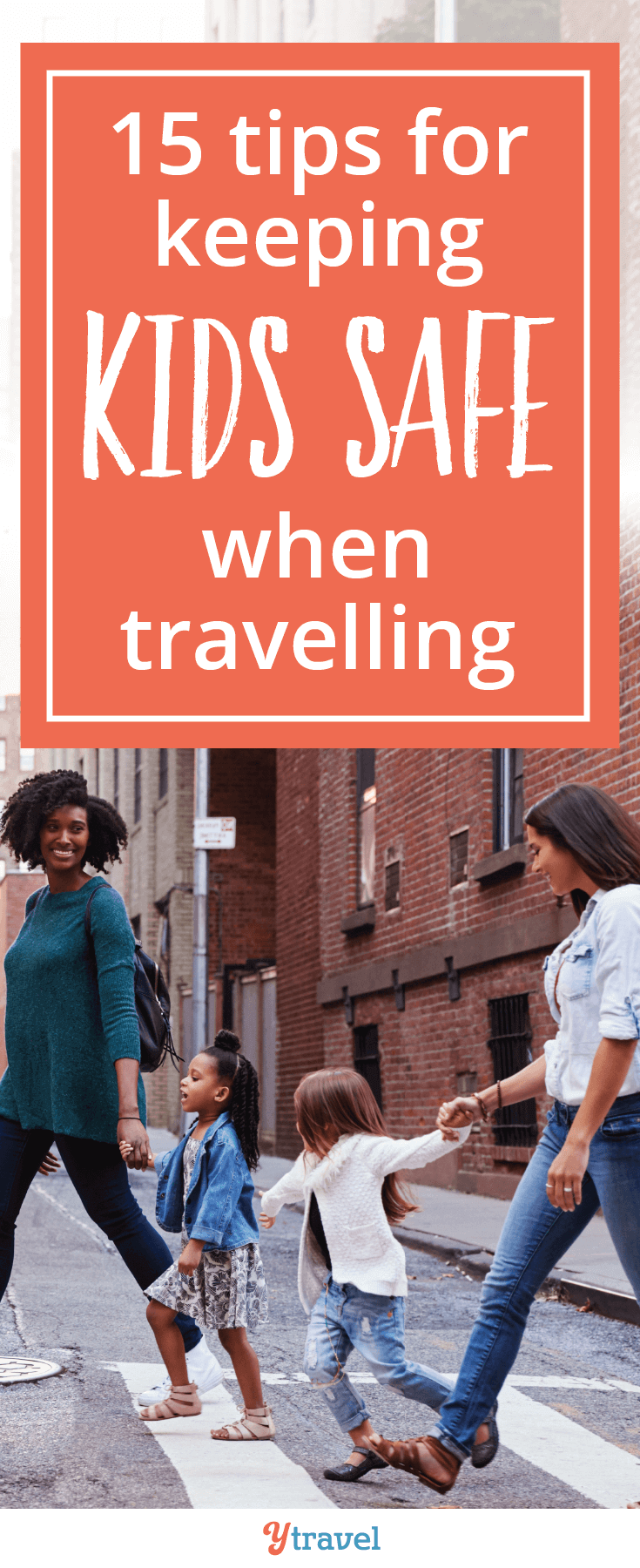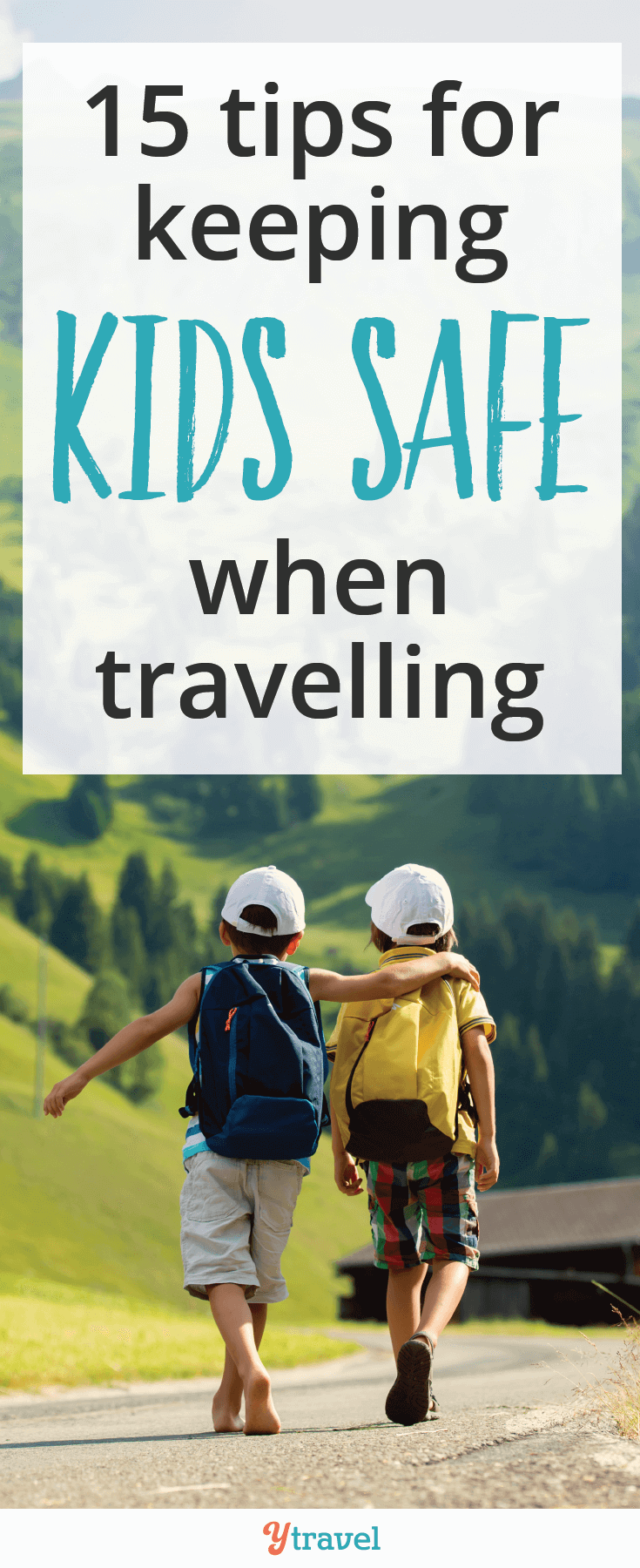This post may contain affiliate links. We may receive a small commission, at no cost to you, if you make a purchase. Read Disclosure.
Before we set off on our road trip around Australia, I’d wake up in cold sweats freaked out about crocodiles eating the girls.
In my imagination, I’d have a momentary lapse of concentration and with one quick snap, they were the new form of chicken dinner.
I’m not just being facetious here in order to tell a good story, I had a lot of anxiety about the crocodiles during our trip in the Top End of Australia. So much that I contemplated skipping it altogether.
Traveling with children can be anxiety inducing, as I found out for myself. While most of my fears were irrational, they were still there, and with any parent, safety is my biggest concern when traveling with kids.
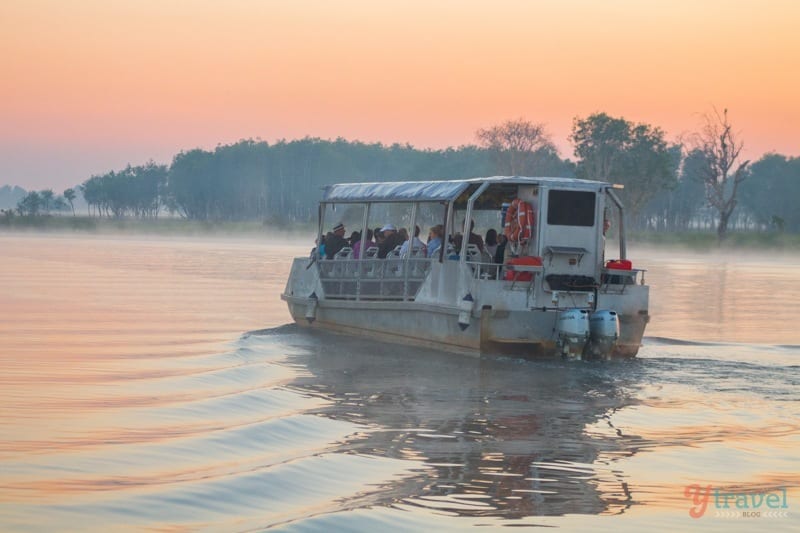
Which is why I’ve put together some of my top tips for keeping kids safe while traveling.
Now that we have traveled through Croc Country in Australia, I can tell you the fear was totally unwarranted, but was good to have because it kept me super vigilant and gave me some wisdom which I will share with you below…
- 15 Safety Tips for Traveling with Kids
- 1. Make smart choices
- 2. Know your risks
- 3. Buy travel insurance
- 4. Drink plenty of (filtered) water
- 5. Be careful of food choices
- 6. Wear safety vests on boats
- 7. Be prepared
- 8. Be diligent and keep your eyes on them
- 9. Watch the heat
- 10. Seat your child in the middle
- 11. Take a safety child restraint
- 12. Don’t overload your prams
- 13. Childproof your room
- 14. Take a medical kit
- 15. Get your travel immunizations
- Final Thoughts
- More Family Travel Tips
- Save It On Pinterest
15 Safety Tips for Traveling with Kids
1. Make smart choices
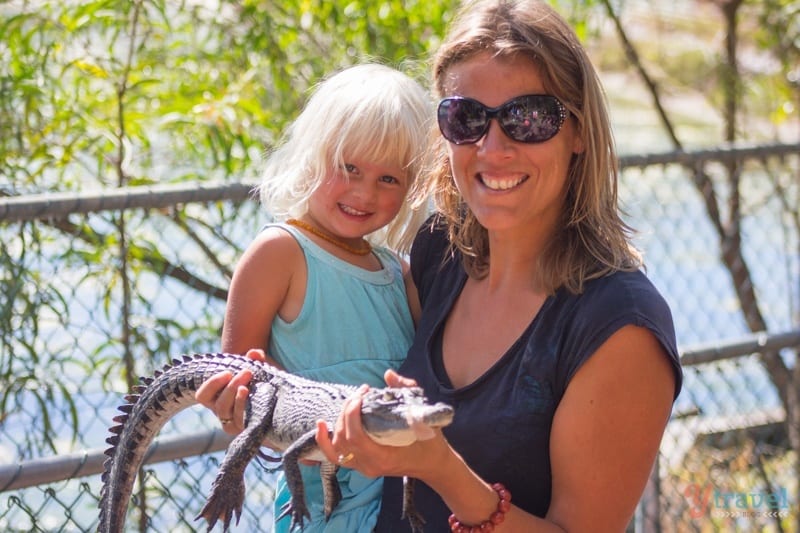
Before you make decisions about what to do with kids, think about it. Think about whether the activity you’re going to do is safe, and look up any potential risks about visiting a place.
A simple Google Search “Is XYZ safe?” will give you some idea of what to expect. Go to forums such as TripAdvisor or Reddit and see what other people have said about their experience – although do bear in mind some of those threads are 10 years old and may be outdated.
Also, just use your common sense. Swimming in a croc-infested river, or playing at the edge of it, is just not smart. Ever.
Don’t take a 10 km hike in the middle of the day when the sun is beating down on your and it’s 40+ degrees celsius.
Know your child’s limits and capabilities and don’t try to push them to do something just because you want to do it.
Don’t travel to countries that are considered high-risk due to war or political situations.
You’re smart enough to know what’s safe and what’s not, you do it all the time at home. Travel is no different. If in doubt, research and ask.
2. Know your risks
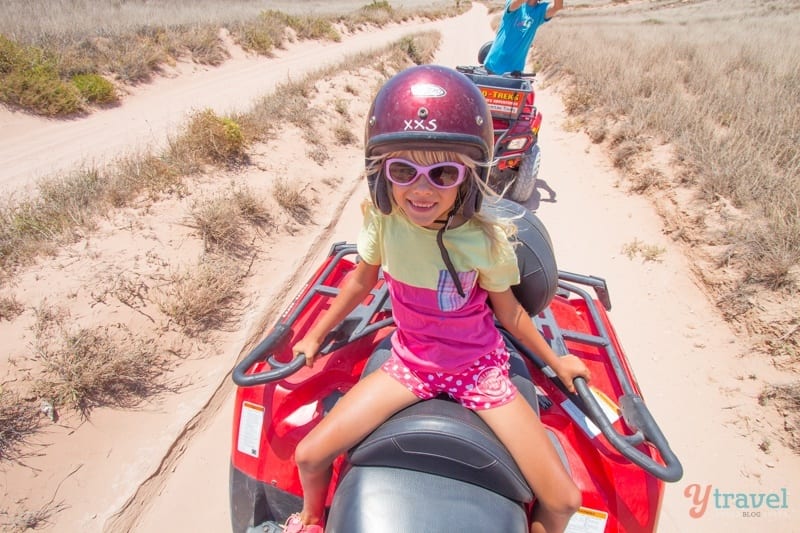
Following on from the first piece of advice, be sure to research the risks thoroughly and also understand what to do should you come into contact with any potential dangers.
Crocodiles kill with one flying snap that you can’t even see, so for us when we visited Top End Australia, we learned not to get complacent or take anything for granted, especially when swimming in lakes and swimming holes. Don’t let your guard down and be vigilant.
If you’re hiking in Canada, look up if there are bears in the park and what to do if you encounter one.
Just because somewhere is peaceful, doesn’t mean it’s safe. Watch for danger, understand what the risks are for anything you do and if it’s too great to protect your child’s safety, then don’t do it.
Don’t go crazy about it though – you can let unwarranted fear get in the way of life lessons and fun, just always have it in the back of your mind.
Our daughters still do things like snorkel the Great Barrier Reef, go quad biking, swim with manta rays and more.
But, we make sure there are plenty of safety precautions in place and we always triple check that children of their age can do it safely.
3. Buy travel insurance
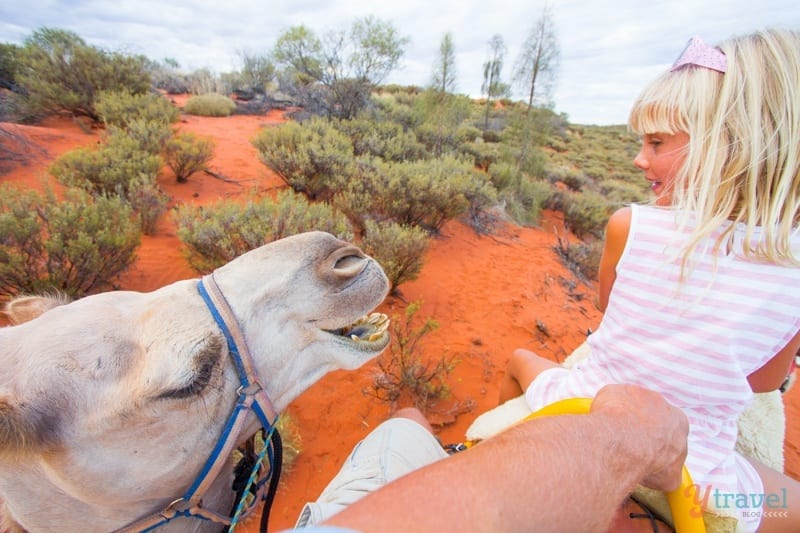
Get travel insurance. It’s not worth the risk going without it, because anything can and will happen.
It’s always the case that when you have it, you don’t need it, but when you don’t have it – something happens.
Make sure you’re adequately covered in case of an unfortunate accident or emergency. Be sure to read the fine print and see what medical emergencies are covered.
Some activities may not be covered by travel insurance such as skiing or hiking, and may need a separate policy; you may want to purchase extra coverage to ensure adequate protection.
Don’t forget domestic travel insurance. It’s easy to think you don’t need it, but accidents can happen within your own country too.
I heard a story of a lady who was feeding fish out of a boat in Queensland and a shark bit off the top of her finger! True story. She had to be helicoptered out of there! EEK! There goes your savings along with your finger.
Plus, delays can still happen and luggage can still get lost.
4. Drink plenty of (filtered) water
In many countries, bottled or filtered water will be your only option. This includes brushing your teeth and keeping your mouth closed when you shower.
Train your children to practice this before they leave for the holiday.
Keep up their hydration while traveling so ensure they are constantly drinking, especially on hot days. Water is always the best option. Skip the juice and soft drinks if they need hydrating.
It’s worth carrying your own water bottle with a filter to save money and ensure you’re drinking clean water.
5. Be careful of food choices
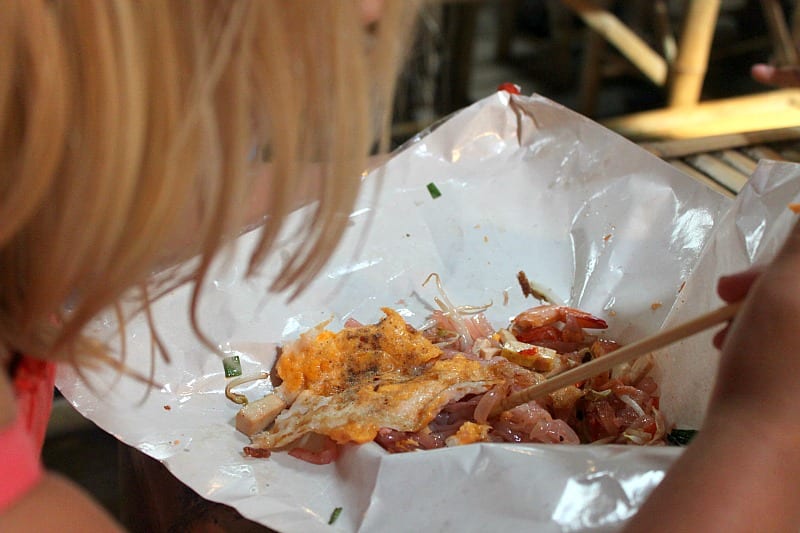
The last thing you need is for the whole family to come down with food poisoning, so be careful about where you eat.
Look up restaurants on Google Maps and see what the ratings are like. Read the reviews and make a call.
You can also ask your accommodation for recommendations, or if all else fails, eat where everyone else is eating.
This is especially important in countries where health regulations may not be as prevalent.
Still get into the culture and enjoy the street food if there is any. Make sure it looks fresh, is piping hot when you’re served it, and it’s frequented by the locals.
Read more: The real reason you should eat street food
6. Wear safety vests on boats
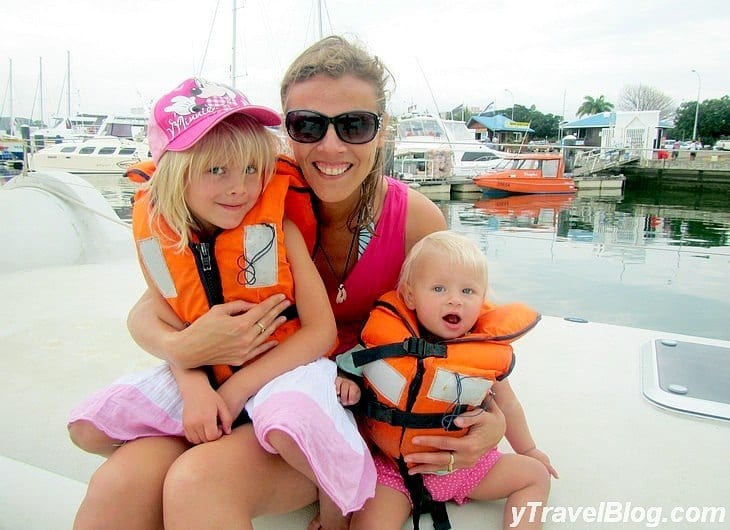
We rarely get on a boat without putting safety life vests on the kids. It’s the first thing we ask for when we get on the boat.
I’m not going to take the risk. It’s too easy for something to happen quickly. As your children get older, wiser and more competent, stronger swimmers, this won’t be necessary.
You might even want to carry your own, which is what we also did when our girls were small. Some places may not have them, especially in countries within South East Asia.
7. Be prepared
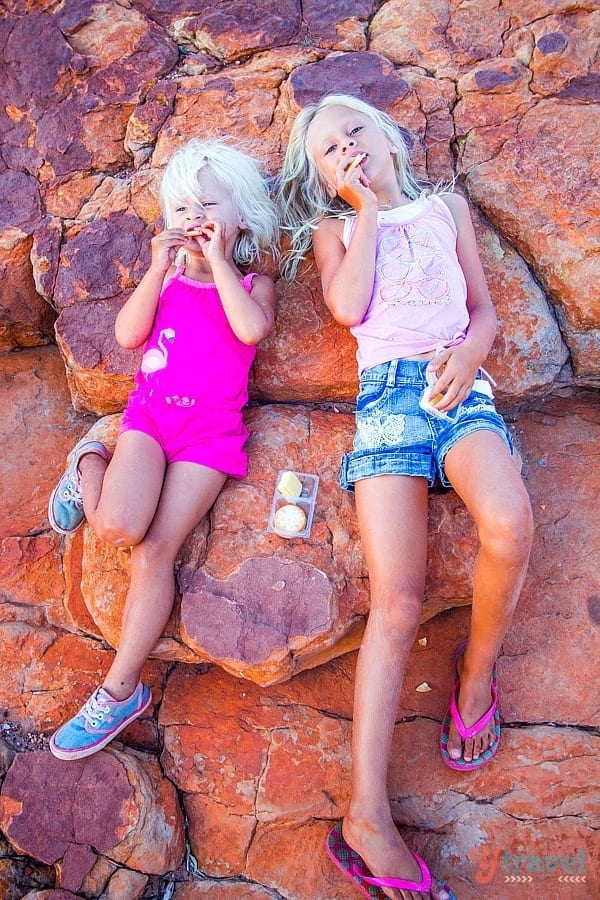
Children at different ages require different things to keep them healthy and safe.
Ensure you have enough water and food for your journey packed in your bag, along with any required medication.
If your child requires a certain diet, research ahead of your family holiday to ensure you can adequately provide for that.
8. Be diligent and keep your eyes on them
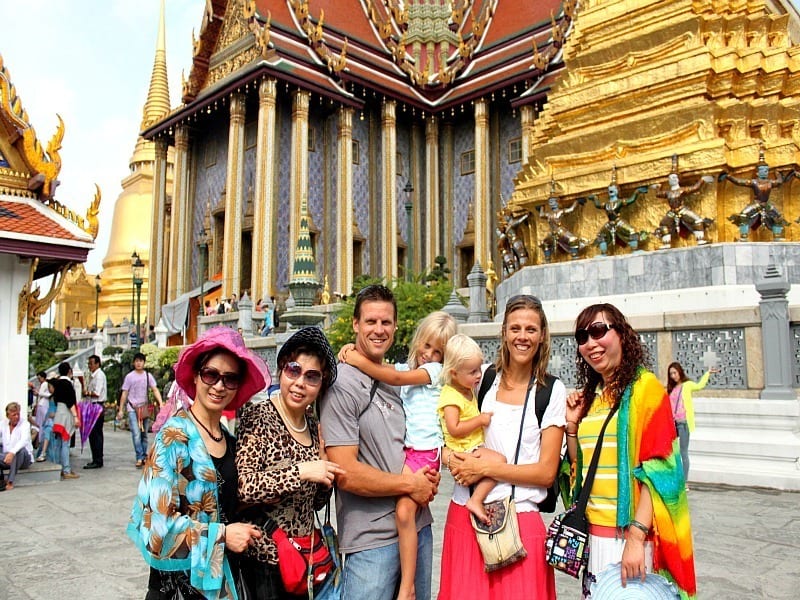
It’s so easy to take your eyes off your child, anything can happen in a blink of an eye.
Keep your children nearby, scan ahead and look around for potential dangers.
Set the safe boundaries wherever you are and ensure your children know where they can and can’t go.
Have a place where you meet should they do get lost and need to find you again, such as outside a ticket office. You shouldn’t need it if you’re vigilant, but kids have a habit of running off, so plan for it should it happen.
Don’t be all freaked out about scary strangers wanting to talk to your kids – most of the time, when we travel to other countries the locals are curious and simply love kids.
It’s important to allow your children the chance to develop social skills and engage in lovely interactions, but still be on stranger danger alert.
9. Watch the heat
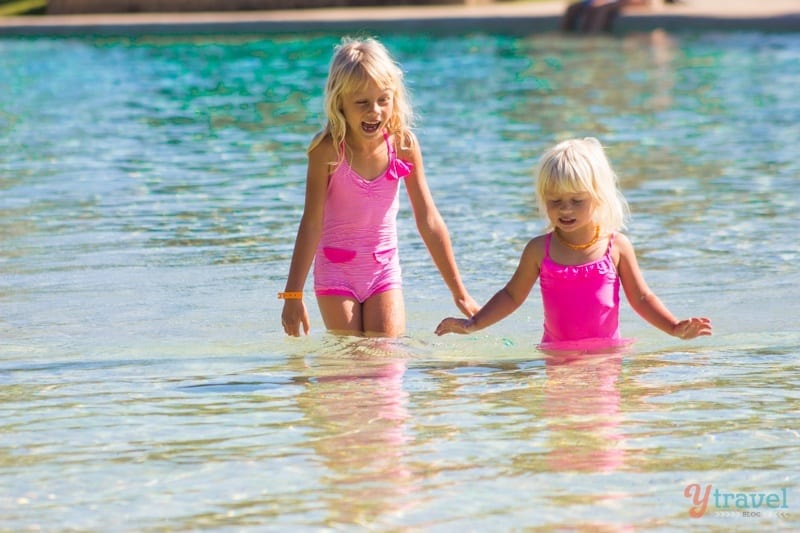
The heat can quickly wipe a child out and cause them to feel ill – and you, as well.
Protect them from the sun using sun screen and wearing a sun hat. Keep them cool in the shade often, and explore early morning and late evening on hot days.
Read More: Tips for traveling in the heat with kids
10. Seat your child in the middle
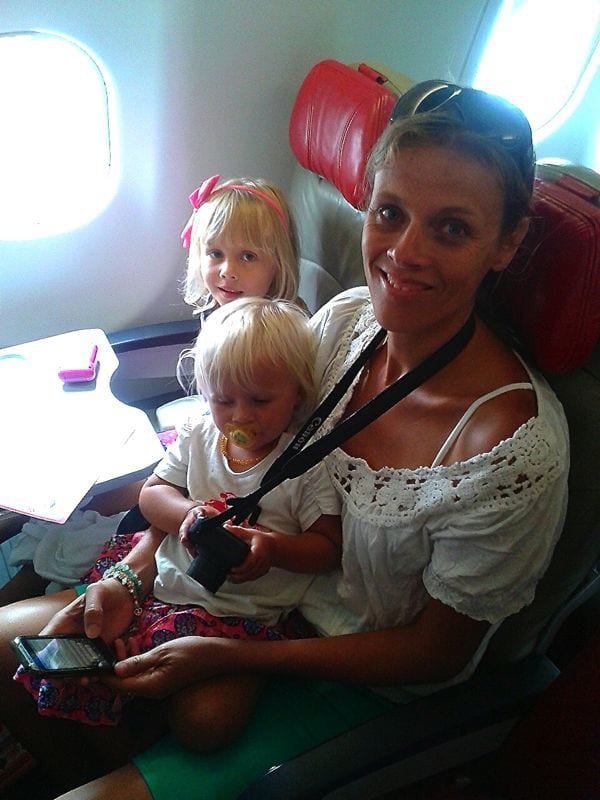
Sit your child in the middle or next to the window on public transport, just in case you fall asleep and they don’t wander off.
This will also keep them from sticking their legs and hands out into the aisle and potentially grabbing hot coffee or something dangerous.
11. Take a safety child restraint
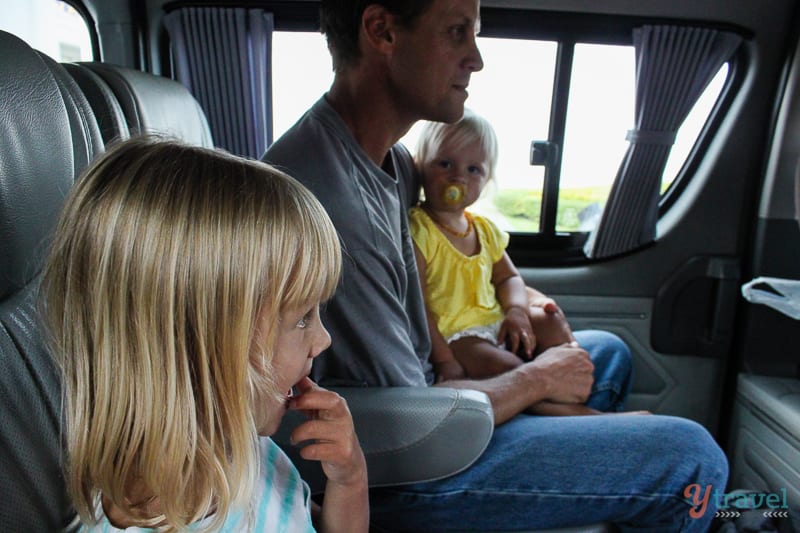
Research ahead to find out the child safety seat requirements for cars in your destination.
It’s a good idea to either take your own child safety car seat or rent one when you arrive in your destination.
There are some regions, like Asia, where car seats won’t be an option – neither are seat belts!
Sit them on your lap, hold tight and do not let them get up and wander around in a mini-van, as much as they want to.
12. Don’t overload your prams

Travel Prams can be brilliant for helping you carry extra bags and luggage. Just be careful you don’t load it too much and the pram falls over.
I’ve heard of babies dying as a result of this and it’s one of those things that you simply don’t think about.
It’s an important travel safety tip with kids you may not have considered.
13. Childproof your room
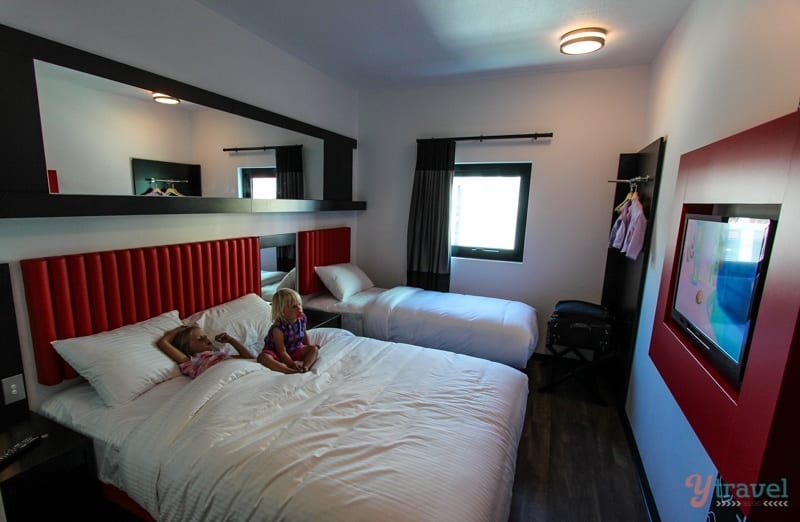
Accidents can so easily happen in your accommodation. Check the height of balconies and windows and keep them locked. Move anything that can fall or looks dangerous.
Check for exposed electrical cords around protruding bits of metal or sharp objects. Remove chairs from balconies as children love to climb on them.
Watch for bunk beds and remove the ladders if you can.
Savannah fell off the top bunk once. Even though we were diligent in not letting her climb the ladder, she found an opening when I was busy packing. It was so scary.
Keep the door locked so they can’t escape. We still don’t know how Savannah did it, but she snuck out of our hotel room in Melbourne, got in the lift and found her way down to the lobby.
Another terrifying moment on the road with Savannah. She’s the wild one keeping us on our toes.
14. Take a medical kit
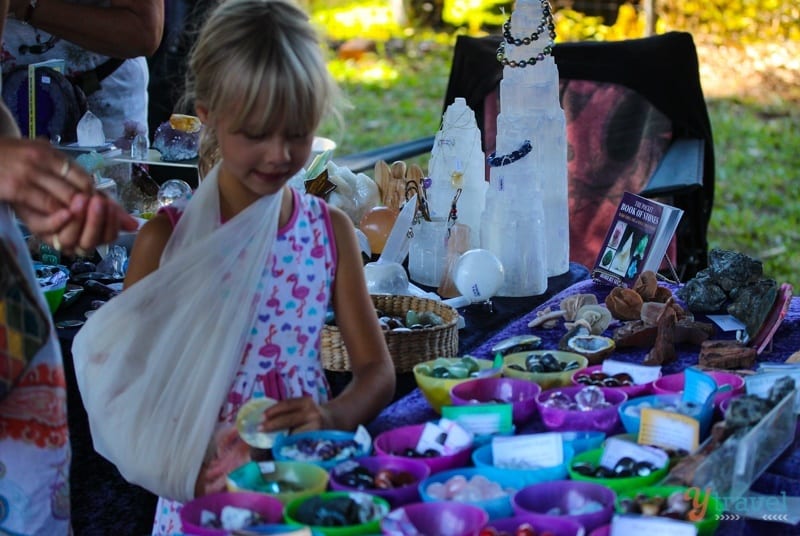
Don’t forget your travel medical kit with baby paracetamol, band aids, anti-itching lotion, sunscreen, bandages, bug spray, oral rehydration preparation and anything else you feel is valuable.
A thermometer is a really important tool for your medical kit.
It’s also a good idea to see your local travel doctor and get their recommendations for things to do take.
15. Get your travel immunizations
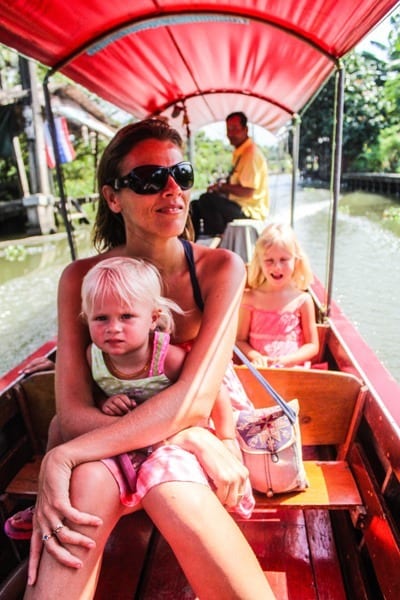
Ensure you know what immunisations your child needs and get them. Prepare at least six months in advance as some vaccines are not readily available, such as Yellow Fever.
You should also note that some vaccines have to be given x amount of days before you arrive at your destination.
Ask your local travel doctor if you need malaria tablets and what you need to do in order to not get sick.
Final Thoughts

When it comes to traveling with kids, the thing that will go through your mind the most is their safety.
Whether you’re embarking on a road trip or flying to a new and exotic destination, it’s important not to neglect taking precautions to ensure their well-being.
Be sure to plan ahead and look out for child-friendly accommodations, book child safe activities, and understand what to expect from your destination.
Failure to prepare, means preparing to fail, as they say. A little extra preparation goes a long way.
More Family Travel Tips
Need more inspiration about traveling with a family? Check out these posts:
- 29 family travel tips with kids
- 15 Travel Essentials For A Baby Traveling To Any Destination
- 16 tips for hiking with kids
- The Best Family Travel Resources, Websites & Apps
- The Pros & Cons of traveling with kids (ages 5-8)
- Travel Tips for preschool kids – Pros and cons
- Travel With a Toddler Tips – Pros and Cons
- Tips for travelling with a baby – the pros and cons
Save It On Pinterest
